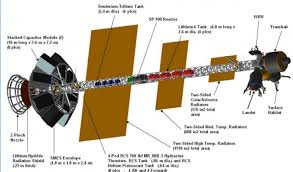
Breaking News
 Food Banks All Over The U.S. Are Being Overwhelmed By A Tsunami Of Hungry People
Food Banks All Over The U.S. Are Being Overwhelmed By A Tsunami Of Hungry People
 Kids' Online Safety Laws Could Dig a Graveyard for Speech and Privacy
Kids' Online Safety Laws Could Dig a Graveyard for Speech and Privacy
 The Only REAL Solution to Digital ID - #SolutionsWatch
The Only REAL Solution to Digital ID - #SolutionsWatch
Top Tech News
 Japan just injected artificial blood into a human. No blood type needed. No refrigeration.
Japan just injected artificial blood into a human. No blood type needed. No refrigeration.
 The 6 Best LLM Tools To Run Models Locally
The 6 Best LLM Tools To Run Models Locally
 Testing My First Sodium-Ion Solar Battery
Testing My First Sodium-Ion Solar Battery
 A man once paralyzed from the waist down now stands on his own, not with machines or wires,...
A man once paralyzed from the waist down now stands on his own, not with machines or wires,...
 Review: Thumb-sized thermal camera turns your phone into a smart tool
Review: Thumb-sized thermal camera turns your phone into a smart tool
 Army To Bring Nuclear Microreactors To Its Bases By 2028
Army To Bring Nuclear Microreactors To Its Bases By 2028
 Nissan Says It's On Track For Solid-State Batteries That Double EV Range By 2028
Nissan Says It's On Track For Solid-State Batteries That Double EV Range By 2028
 Carbon based computers that run on iron
Carbon based computers that run on iron
 Russia flies strategic cruise missile propelled by a nuclear engine
Russia flies strategic cruise missile propelled by a nuclear engine
 100% Free AC & Heat from SOLAR! Airspool Mini Split AC from Santan Solar | Unboxing & Install
100% Free AC & Heat from SOLAR! Airspool Mini Split AC from Santan Solar | Unboxing & Install
Pulsed fission fusion rocket for 37 days to Mars and other missions

The resulting deflagration expands against a magnetic nozzle to produce thrust and generate recharge energy for the next pulse. A z-Pinch is a device that is commonly used to compress laboratory plasmas to high pressures (~1 Mbar) for very short timescales (~100 ns). An electrical discharge produces a high axial current along the outer surface of a column of plasma; this current in turn generates a very strong toroidal magnetic field. This self-generated magnetic field interacts with the axial current via the Lorentz force and radially compresses the plasma column, bringing it to very high densities and temperatures. This team is exploring a modified Z-pinch geometry as a propulsion system by encasing the fission-fusion target in a sheath of liquid lithium, providing a current return path. Numerical results have been promising, the level of compression is sufficient to reach fission criticality. The fission energy boosts the fusion reaction rate, generating more neutrons which boost the fission process. This concept will potentially reach specific impulses of 90,000 sec with thrust levels sufficient to travel to Mars in a month and to interstellar space in a few decades.

 "Refusal to Disclose"
"Refusal to Disclose"

